After being largely ignored for a long time, Gerry Conway’s Batman run in the early 1980s has been the object of well-deserved rediscovery in recent years (not least because of the haunting pencils by Don Newton and Gene Colan). These are cool comics that mark the marvelization of the adventures of the Dark Knight.
By ‘marvelization,’ I mean taking the then-usual Batman formula of self-contained stories – where a threat emerged and was swiftly dealt with by the Caped Crusader, who predictably restored the status quo in less than 20 pages – and giving it the treatment, developed by Marvel, of ongoing subplots, more developed and relatable characters, and a relatively higher degree of realism. This was an approach Conway was familiar with, having worked at Marvel for quite a while (including on that Spider-Man arc where something happens to Spidey’s girlfriend… don’t remember what).
To be sure, Conway wrote his fair share of isolated Batman tales over the years which were no more than one or two issues long and remained faithful to the old formula. With his post-Detective Comics #500 work, though, he began weaving an awesome polygonal tapestry worthy of any comic published by the competition. Since then, of course, this has become the norm, but it wasn’t at the time. While other Batman writers had introduced soap opera-like multi-issue plotlines before – such as Steve Englehart, Len Wein, and Marv Wolfman – no one had really done it on this scale.
Steve Englehart, in particular, appeared to be a major source of inspiration. I’ve praised Englehart’s work when discussing his beloved run in collaboration with Marshall Rogers, and I’ll gladly admit I like some of its less iconic sequels. However, the best comics to follow the Englehart-Rogers run in terms of plot as well as in spirit were definitely those written by Gerry Conway. In the earlier run, political boss Rupert Thorne had Professor Hugo Strange killed and was subsequently haunted by his ghost, ending up committed to Arkham Asylum. Conway had Thorne released and back to pulling political strings behind the scenes, only to be once again haunted by the mad professor’s ghost, now retconned as a smoke and mirrors trick pulled off by Strange, who had faked his own death because that’s just how he rolled. Meanwhile, the hitman Deadshot – another memorable villain from the Englehart-Rogers run – also returned under Conway, now with a contract on Bruce Wayne.
This may sound more derivative than it actually is. What Conway did wasn’t a lazy remake of Englehart’s stories so much as a cool riff on them. He took something that worked and threw it into a new context… While discussing the Englehart-Rogers run, I ridiculously compared it to 1970s’ car chase crime movies (it made sense at the time) – well, if those comics had the raw energy and charming klutziness of Vanishing Point and the original Gone in 60 Seconds, then Conway’s work is their slicker, darker 1980s extension, i.e. To Live and Die in L.A.
Gerry Conway wasn’t just interested in revisiting the past, but also in giving you a sense that things were changing, evolving, going places… Commissioner Gordon was fired. Batman moved his headquarters. Bruce Wayne wooed and was dumped by Catwoman and then Vicki Vale. By the end of the run, there was a new kid running around in a Robin suit. Sure, most changes were superficial and/or short-lived, but Conway created the illusion of forward momentum. And he did it by pouring buckets of moody gravitas onto his writing:
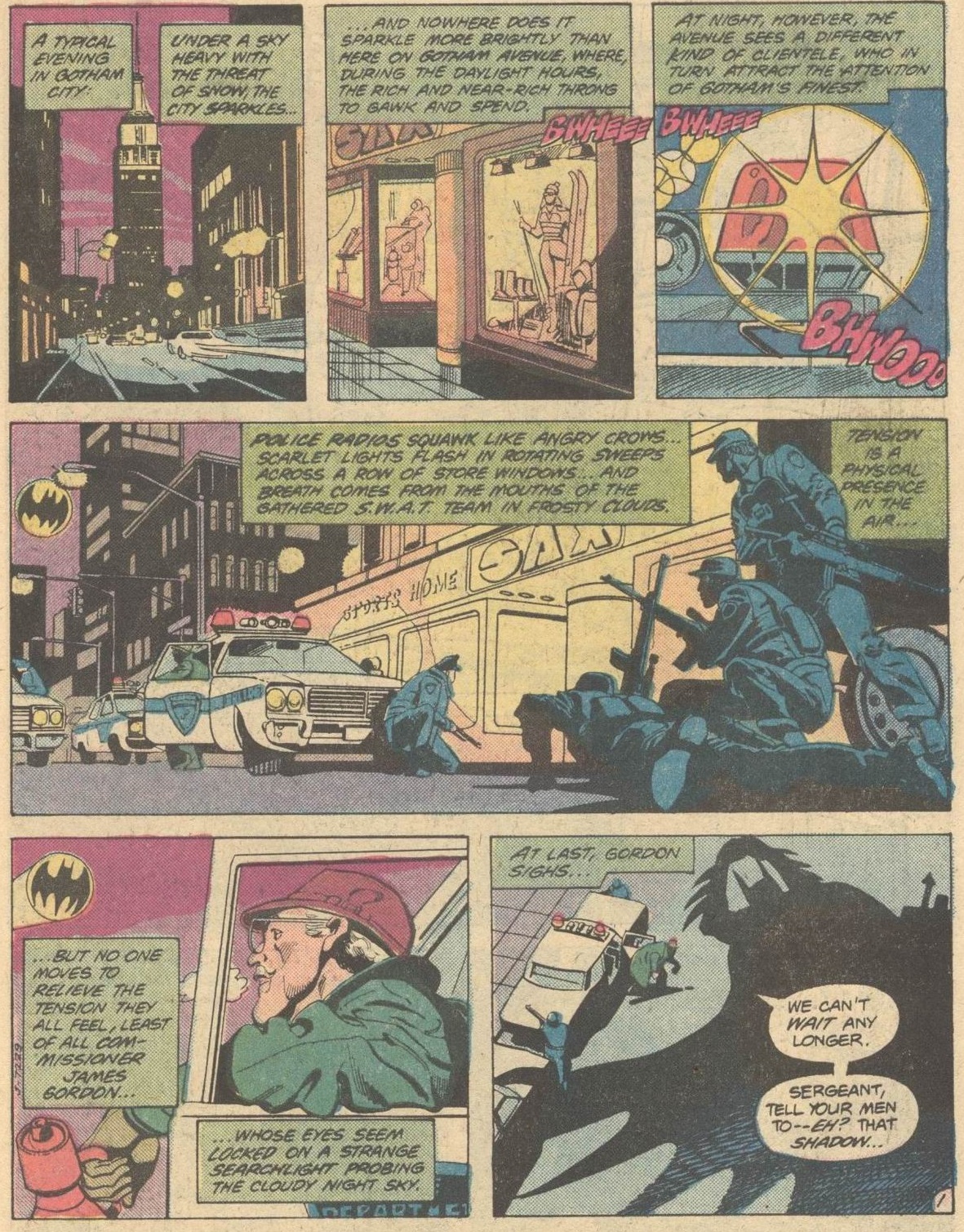 Batman #337
Batman #337
Not that these comics take themselves too seriously. They aren’t gritty in the way that, say, Conway’s Cinder and Ashe is (by which I mean so-gritty-it-makes-your-eyes-bleed). Their tone is just ’mature’ enough to create a captivating contrast with the most childish elements of Batman’s universe.
So, even when Conway rehashed old storylines and used the rogues’ gallery (besides the usual suspects, he brought back such obscure one-shot villains as Anthony Lupus and the Mole), the stakes seemed higher now that a perfect resolution wasn’t inevitable and adventures could have lasting consequences. The rogues’ plots were as silly as in the Golden Age, yet modern storytelling made the villains scarier, because they no longer appeared to be doing their demented antics in a colorful surrealist world, but in something relatively closer to our own recognizable reality.
For example, the guise of pseudo-realism makes it especially creepy to watch Poison Ivy use her powers to manipulate the board members of Wayne Enterprises (all men) into signing their shares off to her…
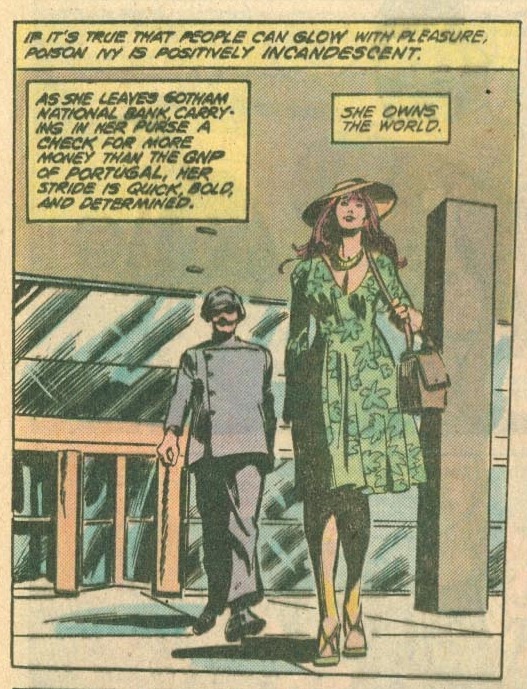 Batman #344
Batman #344
…or to watch Two-Face escape from Arkham Asylum by hypnotizing the guards:
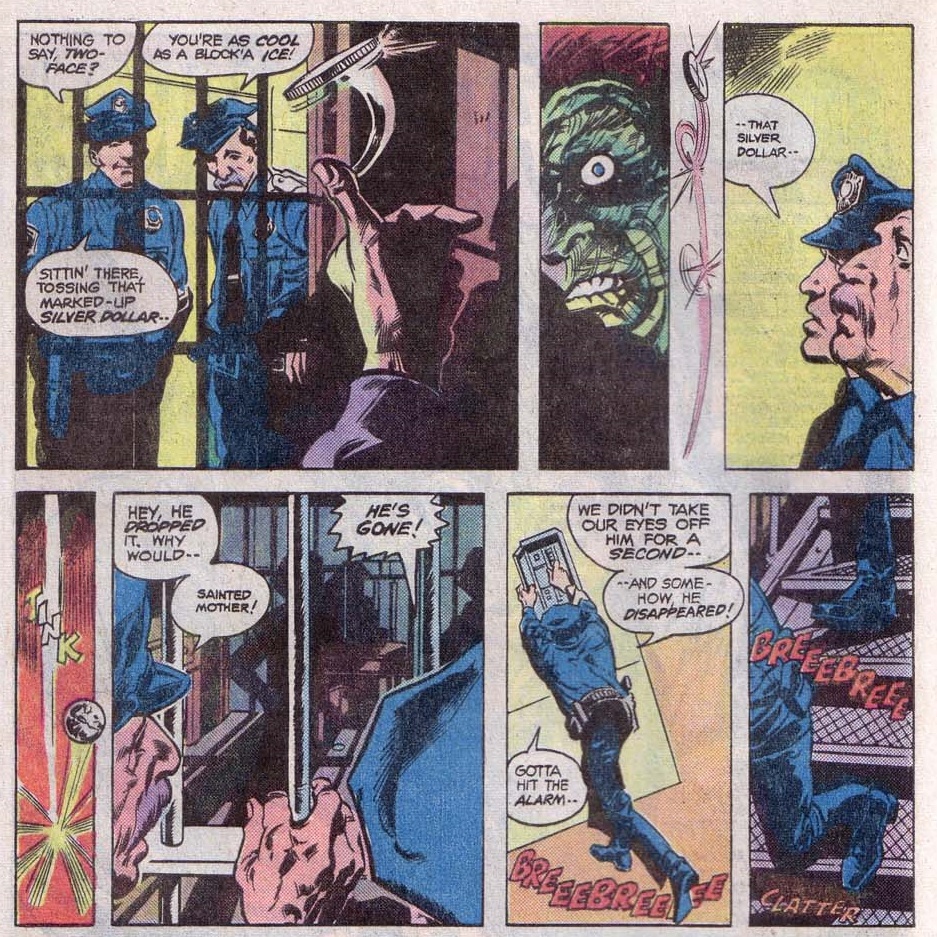 Batman #346
Batman #346
In a daring move, Gerry Conway also recreated the Red Monk, a gothic villain from way back in Detective Comics #31 (Batman’s fifth published adventure or thereabouts). Instead of a sequel, this started off as a full-on remake, oozing with 1980s make-up and special effects:
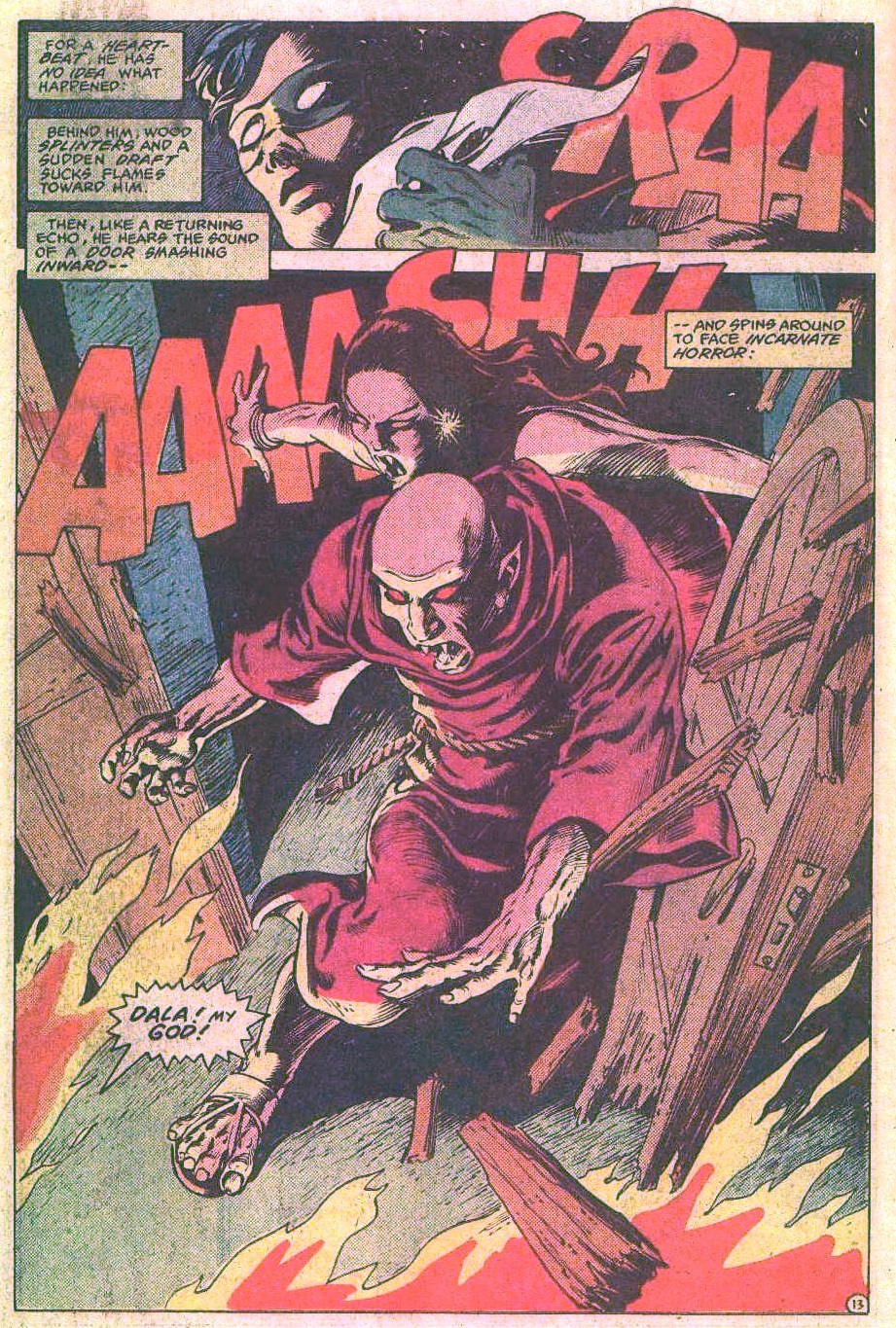 Batman #349
Batman #349
Talk about sinister rouge. This arc (in which Conway shares writing credits with Paul Levitz) has a great, nightmarish vibe and taps into different levels of horror, from the eerie supernatural of Dracula to the real life cruelty of slavery.
Now, naturally Conway knew he could pull this off because he was working with the amazing Gene Colan (whose atmospheric art had also graced Conway’s scripts on Daredevil), but it’s still a gutsy tale given the overall attempt to keep things relatively grounded. What’s more, the story takes a truly unexpected left turn as the Red Monk bites Batman’s neck, which turns the Dark Knight into an actual vampire for a few issues:
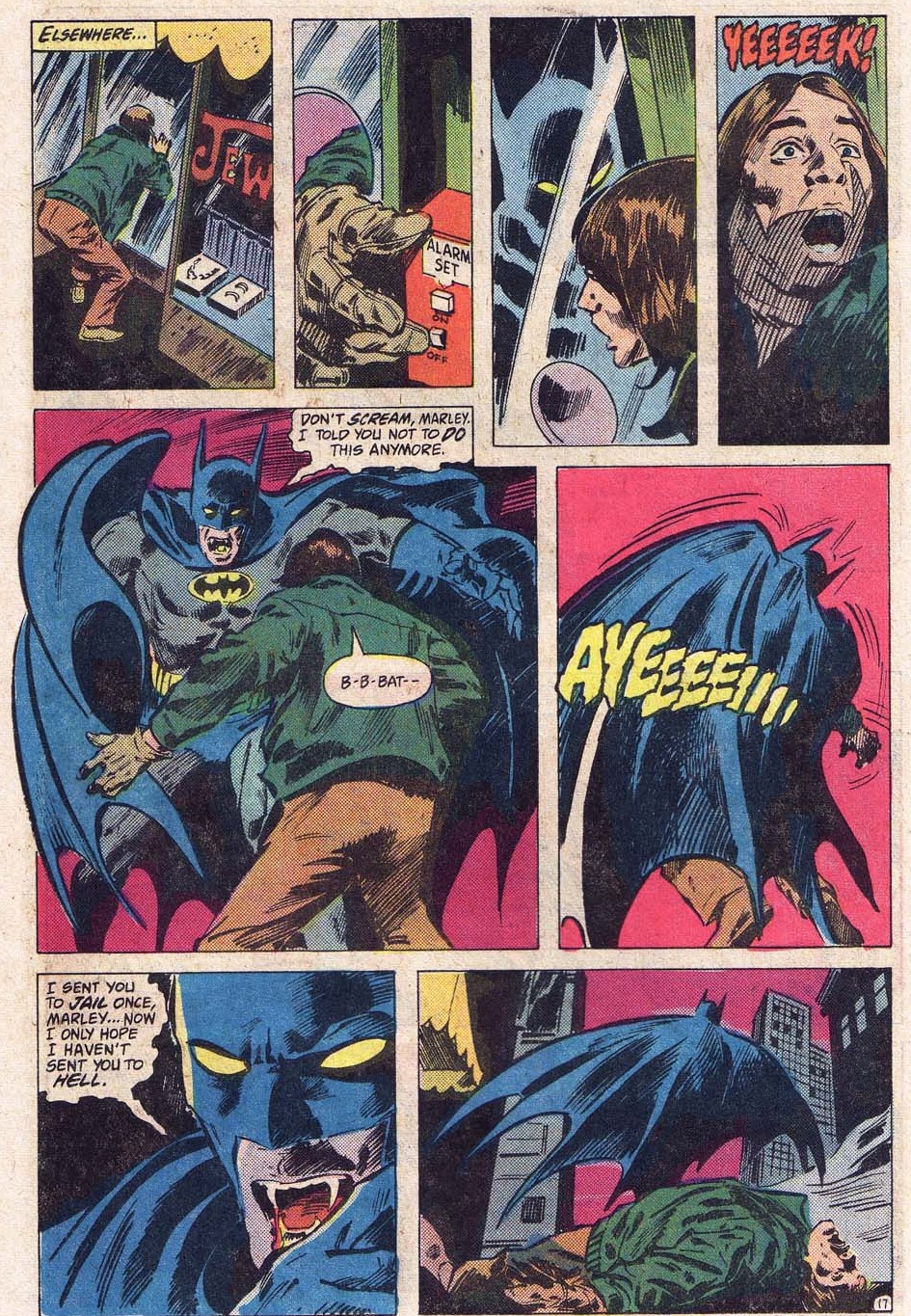 Detective Comics #517
Detective Comics #517
That’s right, for a while Batman was a bloodsucking monster in an official, in-continuity (until 1986) DC comic. Not a Kelley Jones-penciled Elseworlds tale, not even a crazy Bob Haney-written one-off, but a saga in the main titles! How awesome is that? (Well, admittedly not as awesome as that episode of The Brave and the Bold where a vampiric Batman tries to lure the Justice League to their death by throwing a dinner party in their satellite.)
Like the villains, the supporting characters were also given more weight. We learn more about Alfred’s and Lucius Fox’s past as secret agents during World War II (in British intelligence and the OSS, respectively). Alfred, who had a love affair with French Resistance agent Mlle. Marie, meets an illegitimate daughter who wants to kill him:
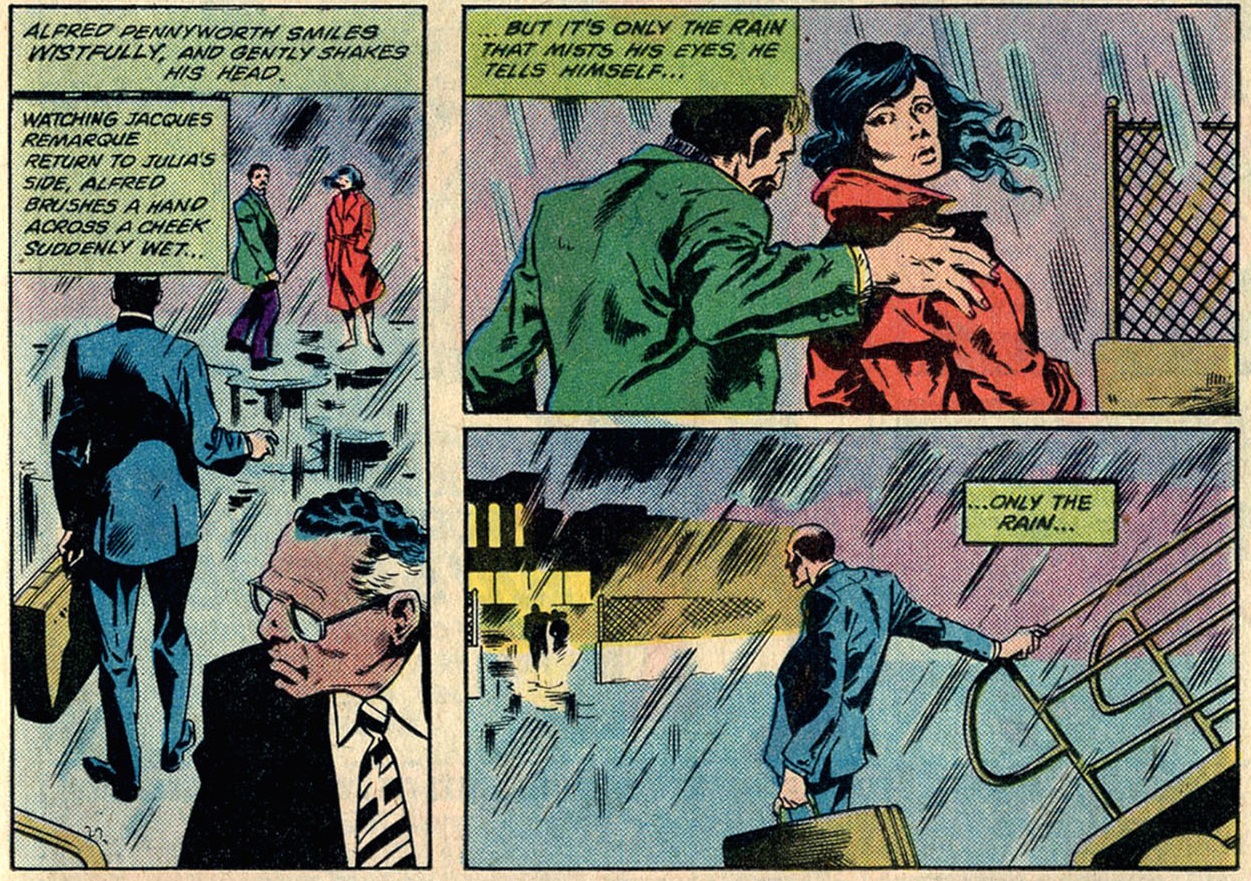 Detective Comics #502
Detective Comics #502
Other members of the cast are given personal issues and small arcs. Dick Grayson, who by now has dropped out of college and outgrown his role in the Dynamic Duo, goes back to the circus to try to forge his own path and do some soul searching, but eventually comes back as he realizes how much he values Batman’s friendship. James Gordon has an existential crisis after the Mayor asks for his resignation, only to then pull through with help from his daughter Barbara. Selina Kyle tries to disregard her criminal past as Catwoman, but decides she first has to fully come to terms with it.
Speaking of Selina, between her and Vicki Vale, Bruce’s love life grows increasingly complicated, even soap operatic:
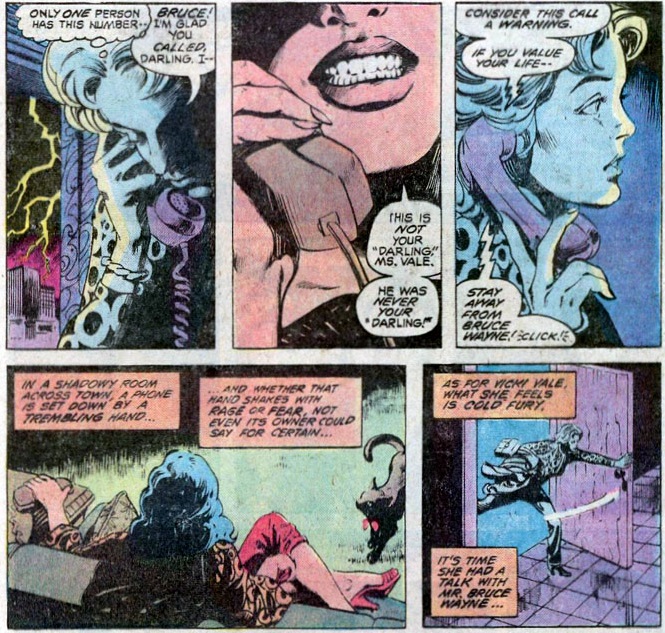 Batman #354
Batman #354
Gerry Conway also explored Gotham City’s politics to an unprecedented degree, capturing the sense that shady dealings and double-crosses were everywhere. During his run, Gotham elects a sleazy new mayor, in the pocket of gang boss Rupert Thorne – who is slipping into paranoia over the Hugo Strange haunting – and a new police commissioner obsessed with killing Batman. There is so much corruption and backstabbing going on that it’s no wonder you end up with City Hall meetings like this one:
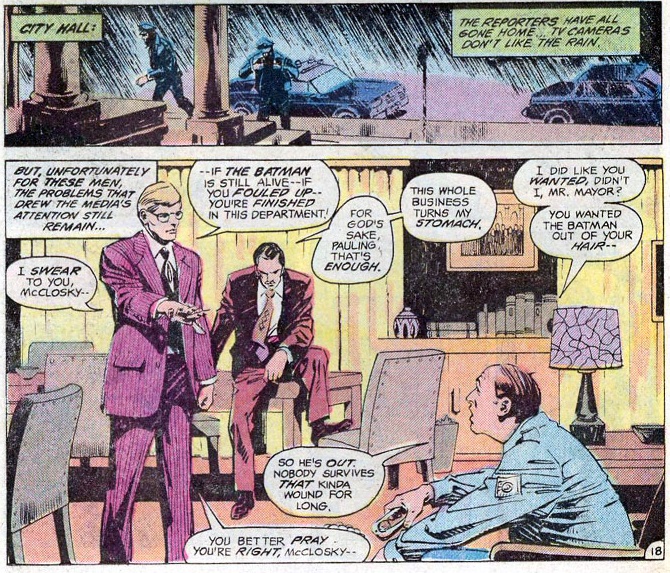
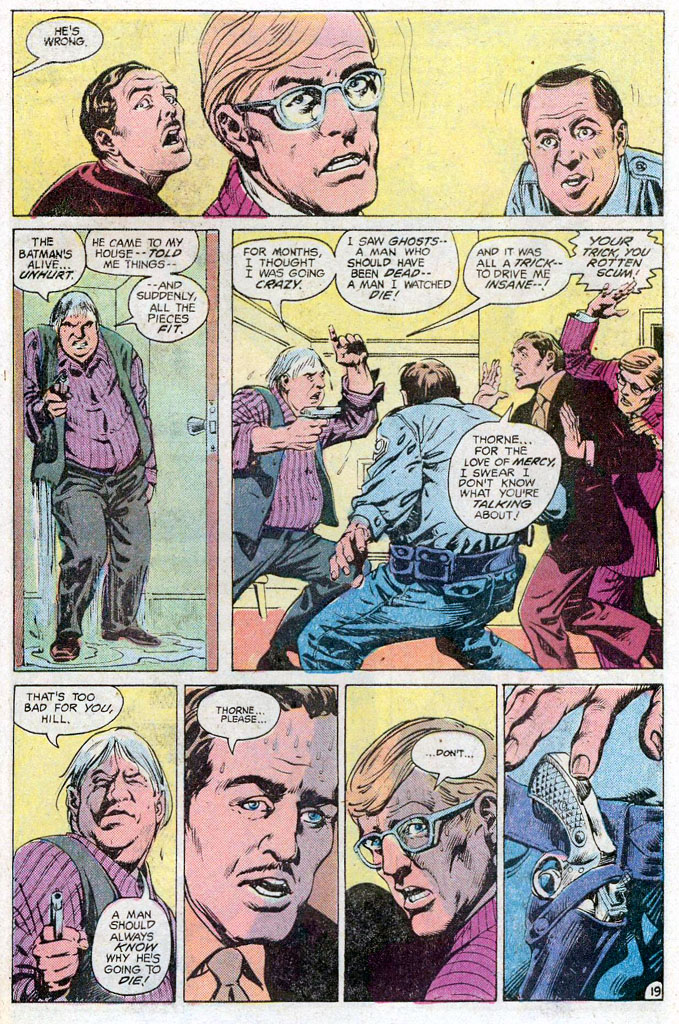
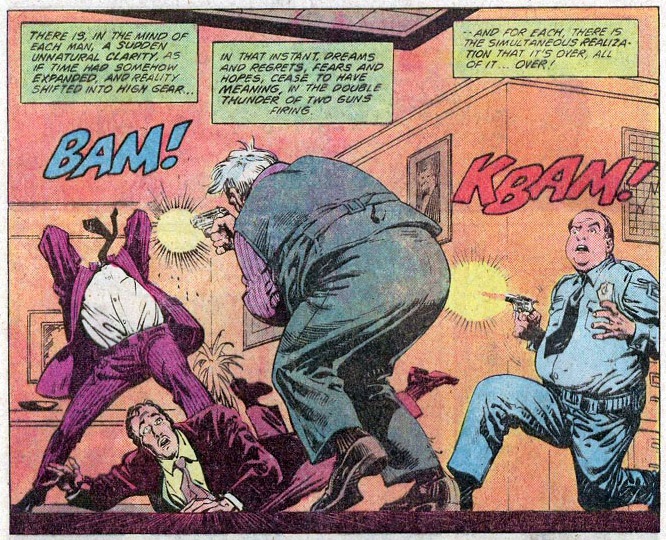 Batman #354
Batman #354
In addition, Conway created a bunch of new costumed foes. One of my favorite issues, Batman #337, with pencils by the majestic José García-López, gives us the Snowman. Freezing his victims and using cold as a weapon, at first this villain seems to be a mere Mr. Freeze knock-off (although, upon finding the first frozen body, Commissioner Gordon stupidly remarks that he has never seen anything like it before). As it turns out, however, the Snowman has a much more twisted origin: his mother accidentally had sex with a yeti! The story somehow manages to play this absolutely straight and it even finishes on a poetic note (partly ruined by the fact that there is an unnecessary sequel a few issues later).
The Snowman isn’t the only new villain who is a product of odd parental decisions… The Sportsman murders star athletes because as a kid he was not very good at sports and so his father forcibly injected him with steroids. Then there is Colonel Blimp, who wants to take revenge on the Navy – with an armed dirigible – because they closed down the zeppelin project where his dad used to work (in the 1950s). Oh, and there is Dagger…who throws daggers… because he really likes daggers… they’re the family business, you know?
So yeah, no wonder these foes didn’t stick. For all the effort Gerry Conway and his occasional co-writers put into breathing life into established cast members, their new creations are quite lazy. I do like the Squid, who takes control of Gotham’s underworld in the final act of Conway’s run, but he basically comes out of a jokey wink to the Octopus in Eisner’s The Spirit (as mentioned here). And the least we say about Pharoh Khafre, the better (it took another 28 years until we got a decent Batman comic about an Ancient Egypt-themed villain). Though I will say this about Manikin, the disfigured supermodel taking revenge on the fashion industry: while her story isn’t particularly good, the idea of a supermodel villain is not out of place given the rogues’ predilection for costumes and general sense of performance, not to mention the fact that the theme of disfigurement is pretty much a leitmotif in Batman adventures (indeed, the animated episode Mean Seasons explores the same premise).
The one breakout villain was the scale-covered gangster known as Killer Croc. Conway did a great job of slowly unfolding the new rogue… Croc starts off as a background character and at first he looks like just another thug, albeit one who keeps to the shadows and is less inclined to follow the herd than others. The story seems to be setting up the Squid as the next big villain and Killer Croc as some kind of lowlife wild card – but then Conway pulls the rug from under the readers by making Croc the bigger threat. Indeed, the character’s big reveal is not so much when we finally see his deformed face (and later his crocodile-like body) but when we realize he has both street smarts and cold blood, making him much more calculating and difficult to predict than the Caped Crusader’s usual assortment of impulsive, madcap foes. The scene where Croc spots Batman hiding from the Squid’s men always sends chills down my spine:
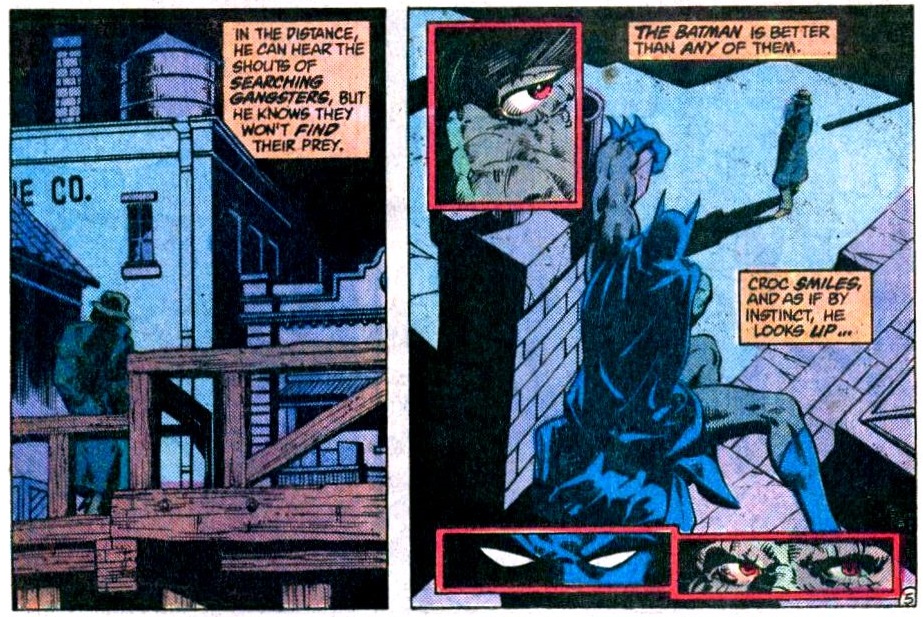
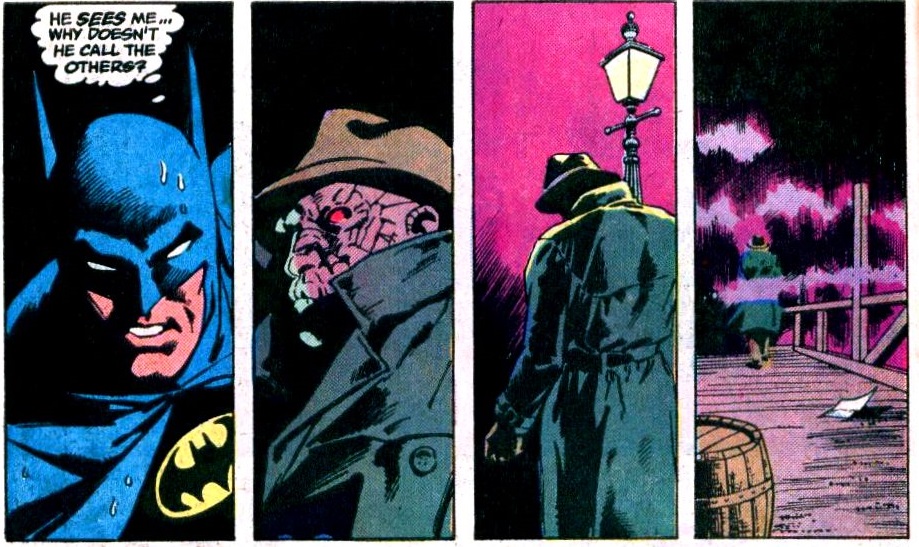 Detective Comics #524
Detective Comics #524
By the climactic final issue of Conway’s run (‘All My Enemies Against Me’), Killer Croc has made such an impression that all the established members of the rogues’ gallery fear being outdone and rush to kill Batman before Croc nails it. Credit for the character’s longevity, however, must go to the art teams in these issues, since it clearly wasn’t Conway’s characterization that resonated with future writers. Although Killer Croc continues to show up in Batman comics to this day, his only similarity to Conway’s creation is the visuals of a man who looks like a crocodile – in terms of personality, Croc has been reduced to a dumb brute in most appearances since then.
The other noteworthy contribution from this era is Jason Todd, the teenager who went on to become the second Robin.
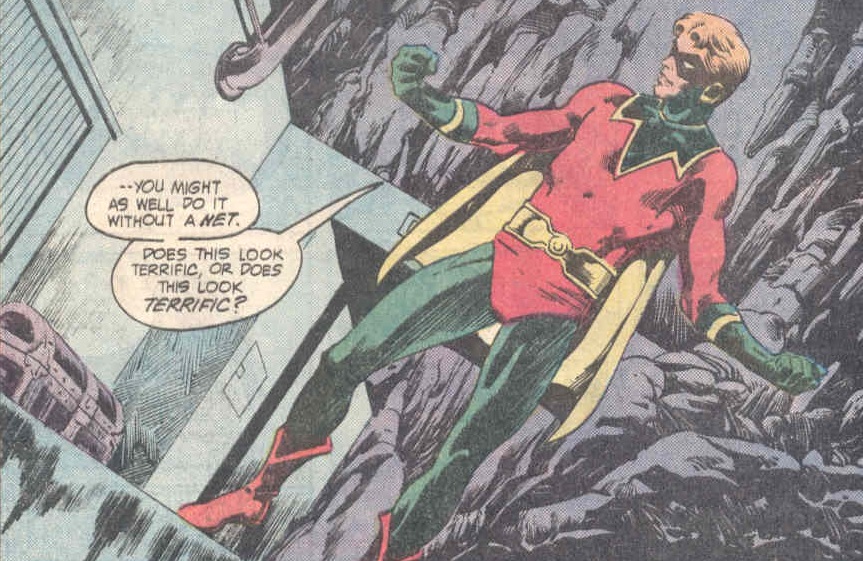 Detective Comics #526
Detective Comics #526
The notion of replacing Dick Grayson (who had been around as a young sidekick for over 40 years) is inspired, but it also turns out to be a missed opportunity… Rather than give Jason Todd a distinct origin and personality, Conway ends up writing a very close variation of the original Robin’s origin story: circus acrobat parents killed because of extortion racket. I don’t know how much of this was editorially dictated, so maybe Conway was just following orders from the higher-ups – in his defense, at least he got some pathos out of the parallel with Dick Grayson’s backstory:
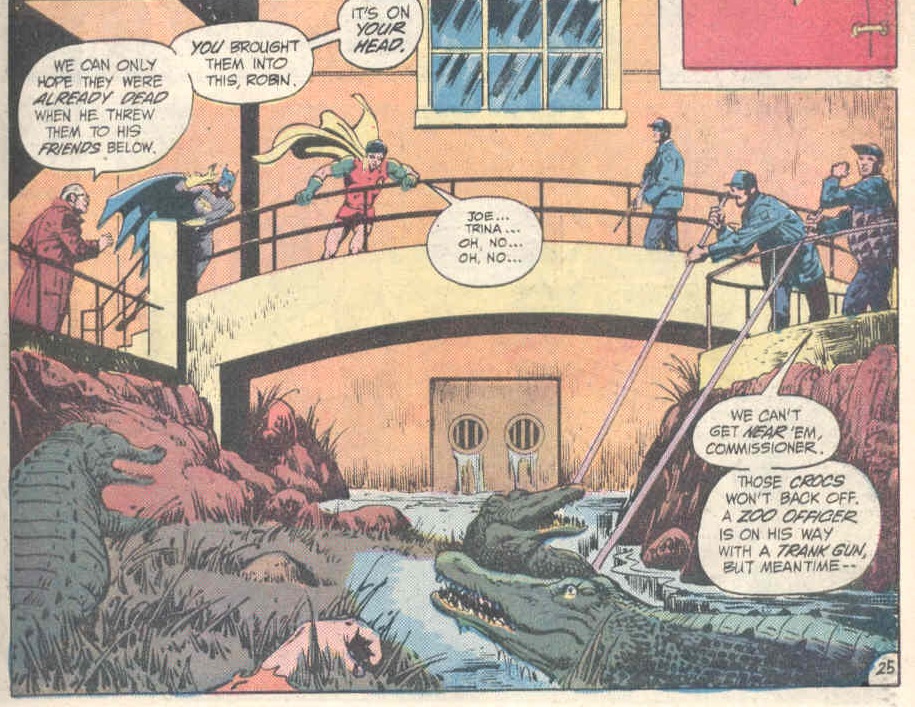
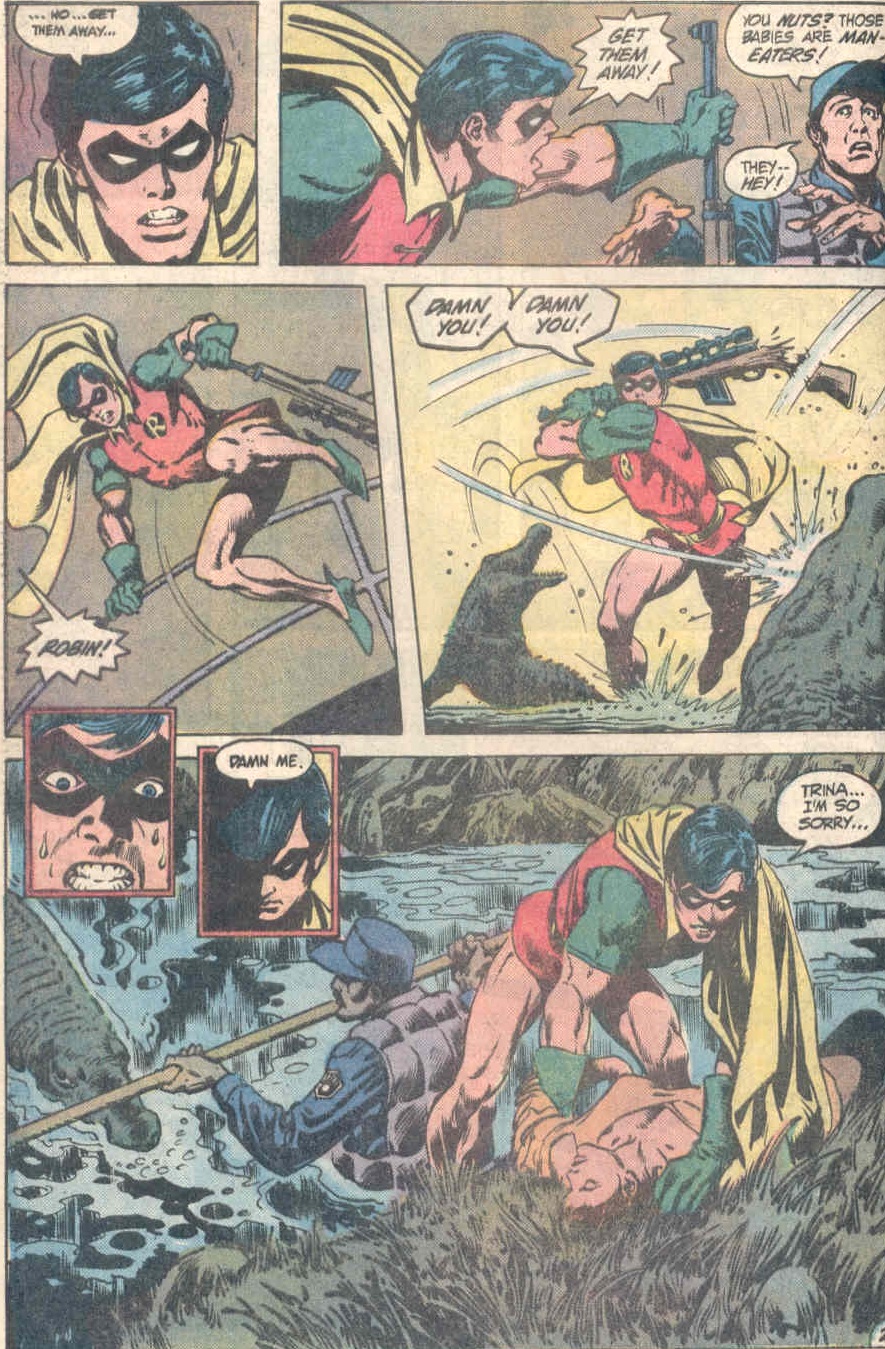 Detective Comics #526
Detective Comics #526
In any case, this decision would be rectified (for better or worse) a few years later, when Jason Todd was rebooted as a street kid whose lowlife father was killed by Two-Face. So once again, for all of Gerry Conway’s innovation in terms of storytelling, his character ideas didn’t seem to have a long-lasting impact…
That said, it would still take a few years for Crisis on Infinite Earths to undo Gerry Conway’s work. In the meantime, writing duties fell upon Doug Moench, whose run closely followed Conway’s in tone and plotting. In fact, most of Moench’s 1980s output on Batman and Detective Comics consists of picking up Conway’s loose ends or delivering sequels to his stories. But to be fair, there is a lot more to say about Moench and I will say it on some other post… and you can bet that post will feature even more vampires!

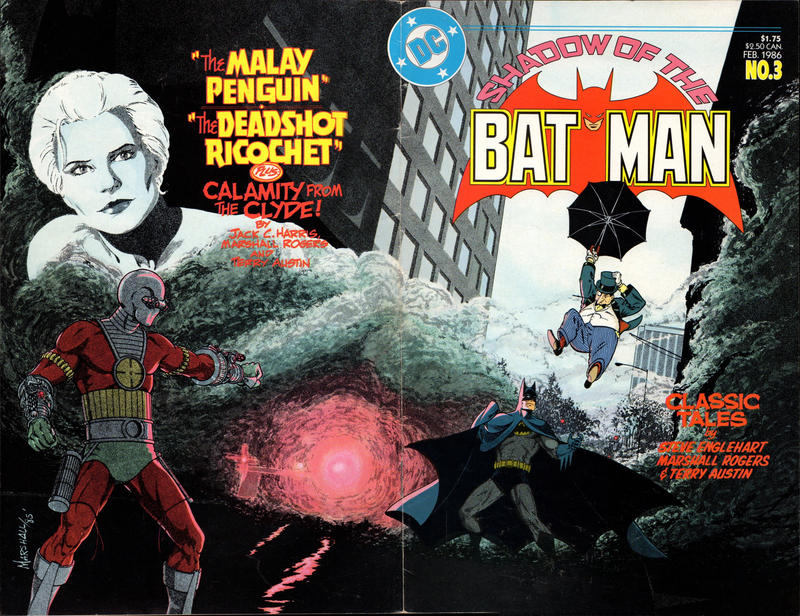
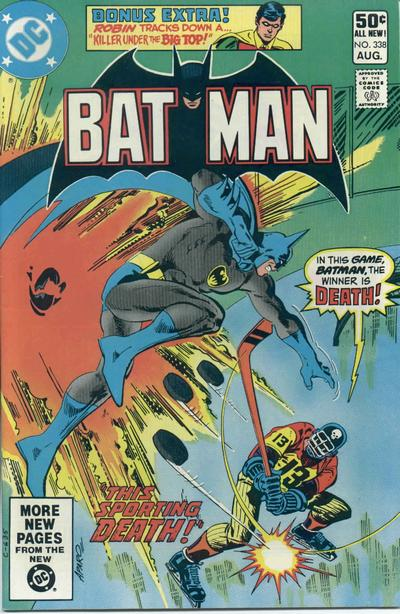
I am a lifelong Batman fan though I only started reading the comics seriously after college in 2008 (I did read comics based on the animated series in the 90s as a kid.) A few years back I found a site that talked up Gerry Conway’s run which I read very little of besides a few random issues being in best of Catwoman/Scarecrow anthologies etc. I hunted down this entire run and then I went on and did Moench’s entire run right after. I think this a seriously underrated and forgotten era of Batman comics. I loved all the various subplots and character arcs weaved throughout. Plus these are the stories that really brought back Poison Ivy and the Mad Hatter and made them what they are now (Moench would help flesh these two out more as well.) For me Gerry’s run combined with Doug’s run is like reading a 6 season TV series that has standalone eps weaved in with larger plots that eventually lead a a big season like finale climax and then it picks up the pieces and builds again. I look forward to your review of Doug’s runs (Both the 80s and 90s runs, which were both very different but great.) I really wish DC would collect this era outside the artist only collections. It would be nice to have this run from start to finish in a like 2 or 3 big books.
Great write up and required reading for any Batman or DC Comics fan. I’m currently making my way through Gerry’s Detective Comics and Batman run and am impressed with the high quality of his work. I am also in the midst of his JLA run, which is also superb.
Yes, Gerry Conway brought a Marvel Comics sensibility to his runs on the two Bat books, though his work continues the narrative style pioneered by Denny O’Neil ten years before.
The narrative here is in Conway’s own voice, however. There are elements of what I remember Batman comics being like when I first started reading them in 1979-80, but Conway’s writing is far more sophisticated and literate than that of O’Neil’s and Len Wein’s. Conway was a savvy social commentator and critic, and he could deliver scathing broadsides to both political sides in just a sentence or two. In fact, in even his seemingly slightest stories, the vast majority of the time, Conway would insert some kind of caustic or cynical societal observation. In JLA #179 he delivers a gut punch to vapid Baby Boomers and the Disco culture:
“Like lemmings, those who hunger for something special to spice lives of soul-deadening monotony seek out these temples to the god of transcience [sic], claiming that each new find is the best, most spectacular of all…the truth sadly, is that they are all the same–caves of darkness where, for a time, a dancer can forget the mediocrity of his or her daily existence–and thus pretend, for a time, that he or she is a star! No matter that the moment is fleeting and ephemeral; no matter that those who stand in awe are as lost and lonely as the dancer himself…”
That is some bleak and bitter writing from Gerry Conway, but it accurately sums up the emptiness of modern life, to say nothing of the Disco-drenched late ‘70s. It could very well serve as its epitaph, too. By March 1980, when this issue was published, Disco as a popular musical and cultural trend was in its death throes. The story was written several months before March, 1980.
Thankfully DC have been listening and “Tales of The Batman: Gerry Conway” is published next week.